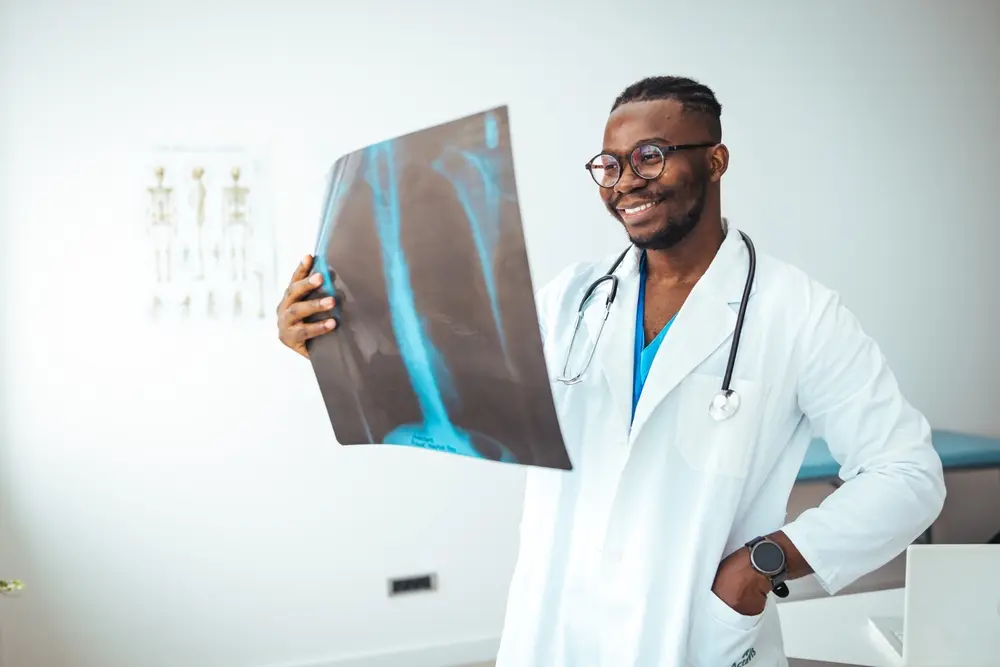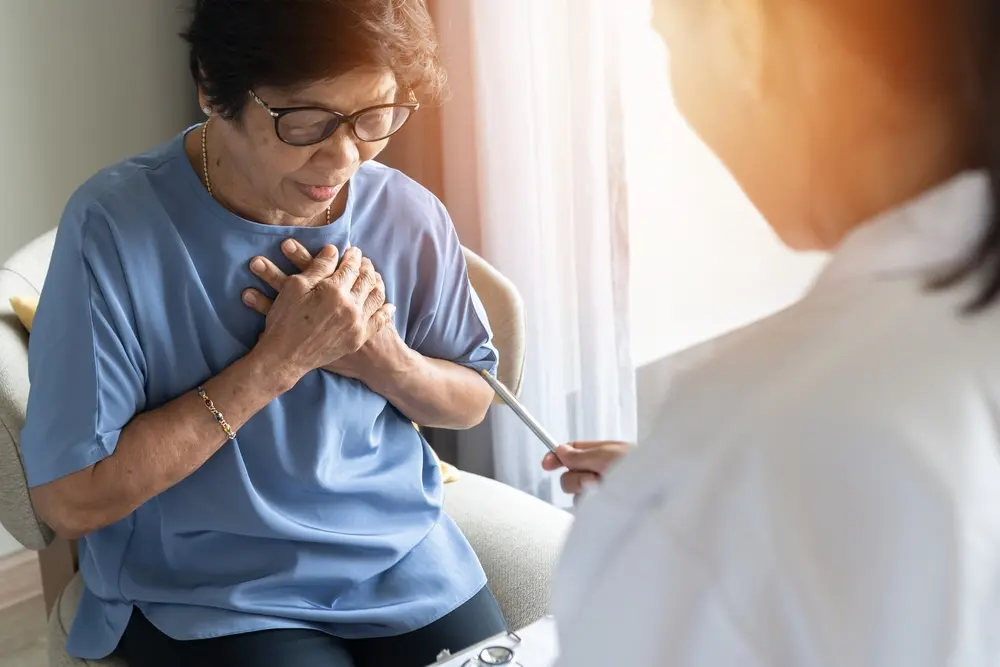
Lung cancer is the leading cause of cancer deaths among American men and women, accounting for about 1 in 5 of all cancer deaths. Every year, more people die of lung cancer than prostate, colon and breast cancers combined. But as the American Cancer Society points out, the number of new cases continues to drop, partly because more people are quitting smoking (or avoiding tobacco altogether) and also because of advances in early detection and treatment.This article will uncover the latest treatment options and supportive resources available to lung cancer patients and their loved ones. We'll also give insights into the complexities of lung cancer and the ongoing efforts to improve outcomes and quality of life for the people affected by this disease.
Lung cancer is a type of cancer that starts in the cells of the lungs. When lung cells start growing out of control, they form tumors that can interfere with the lung's ability to function appropriately. Over time, these cancer cells can spread to other parts of the body if undetected.
There are two main lung cancer types: small-cell and non-small cell lung cancer (NSCLC).
Lung cancer can affect anyone. According to the American Lung Association, about 238,000 new cases of lung cancer are diagnosed in the US every year, and about 604,000 are living with it. Here are some risk factors:

Symptoms vary based on the type of lung cancer, its stage, and other factors. For example, stage 1 lung cancer symptoms can be subtle or nonspecific, and in some cases, individuals may not experience any symptoms at all. With that said, here are some common symptoms that do occur:
Please note that many of these symptoms can also be caused by other conditions, and not everyone with lung cancer will experience all of these symptoms. However, if you experience any persistent or concerning symptoms, especially if you're at risk, you should talk to your doctor for checks and tests. Early detection and treatment can significantly improve outcomes for people with lung cancer.
The overall five-year lung cancer survival rate is relatively low compared to many other types of cancer. According to the American Cancer Society:
The relative five-year survival rates for small-cell lung cancer are as follows:
The relative five-year survival rates for non-small cell lung cancer are as follows:
The lower survival rate is mainly due to many patients being diagnosed in later stages. It's important to remember that survival rates are general estimates and may not accurately predict one's prognosis.

Diagnosis typically begins with a thorough medical evaluation, including physical examination, a review of the patient's medical history, and imaging tests like chest X-ray, CT scan, and PET scan.
A biopsy is often performed to confirm the presence of lung cancer and determine its type and subtype. This involves the removal of a small tissue sample from the lung or lymph nodes for examination under a microscope.
Lung cancer treatment varies based on factors like the type of cancer, its stage and the patient's medical history. Generally, treatment includes:
Lung cancer patients with early-stage cancer who are deemed suitable candidates can get surgery. Surgery removes the lung tumor and any affected surrounding tissue or lymph nodes and can be all the treatment needed.
Chemotherapy, either alone or in combination with other treatments, may be used to shrink tumors, prevent cancer from spreading, or alleviate symptoms in advanced stages of lung cancer.
Radiation therapy uses high-energy rays to target and kill cancer cells. It may be used as the primary treatment or in combination with surgery or chemotherapy, particularly for tumors that cannot be surgically removed.
Immunotherapy boosts the body's immune system to fight cancer cells. It's often used for advanced lung cancer or when other treatments haven't worked. The FDA has approved two immunotherapy drugs, pembrolizumab (Keytruda) and atezolizumab (Tecentriq), as adjuvant treatments after surgery and chemotherapy for some people with early-stage non-small cell lung cancer.
Targeted therapy drugs target specific genetic mutations or alterations present in cancer cells. They are particularly effective in non-small cell lung cancer (NSCLC) patients harboring gene mutations such as EGFR, ALK, ROS1, or BRAF. Some examples of targeted therapies include EGFR inhibitors, anaplastic lymphoma kinase (ALK) inhibitors, BRAF Inhibitors, ROS1 Inhibitors, etc.
Patients with metastatic or advanced lung cancer can get palliative care, which addresses symptoms like chest pain, shortness of breath, fatigue, and emotional distress. Doctors may also recommend symptom management strategies like medications, physical therapy, breathing exercises, and nutritional support to alleviate the side effects of treatment and improve overall well-being.
And since lung cancer diagnosis and treatment take a toll on patients and their families, counseling, support groups, and other psychosocial interventions are critical. Psychological support could make it easier for people to navigate the challenges of living with lung cancer.
Regular follow-up appointments with healthcare providers are essential for monitoring treatment response, managing side effects, and addressing new symptoms or concerns.
The doctor may perform imaging tests, blood tests, and other diagnostic procedures periodically to assess disease status and detect any recurrence or progression of lung cancer.
Lung cancer screening is a crucial process that can potentially save lives through early detection. It involves testing individuals who are at high risk for lung cancer but do not yet show symptoms. Early detection through screening can significantly improve the chances of successful treatment and survival.
Lung cancer screening typically uses a low-dose computed tomography (LDCT) scan to detect abnormalities in the lungs. This type of scan is more effective than traditional chest X-rays in identifying small, early-stage lung cancers. The LDCT scan uses a lower dose of radiation compared to standard CT scans, making it safer for routine screening.
The United States Preventive Services Task Force (USPSTF) recommends annual lung cancer screening for individuals who meet the following criteria:
These guidelines are based on evidence showing that these groups are at the highest risk for developing lung cancer. It is important to note that individuals outside these criteria are generally not recommended for routine screening because the potential risks and harms may outweigh the benefits.
The lung cancer screening process starts with a discussion between the patient and their healthcare provider. This conversation should cover the benefits and risks of screening, as well as the individual’s specific risk factors, including smoking history, family history of lung cancer, and exposure to certain environmental hazards like radon or asbestos.
If screening is deemed appropriate, the patient will undergo an LDCT scan. During the scan, the patient lies on a table that slides through the CT scanner. The procedure is quick, painless, and non-invasive, typically taking only a few minutes.
The primary benefit of lung cancer screening is early detection. Lung cancer often does not cause symptoms until it has reached an advanced stage, making treatment more difficult. Early-stage lung cancer is more likely to be treatable and curable, often through surgery, radiation, or targeted therapies.
Screening can reduce lung cancer mortality by detecting cancers at an earlier, more treatable stage. Studies have shown that LDCT screening can reduce the risk of dying from lung cancer by about 20% compared to chest X-ray screening.
Clinical trials are always ongoing to explore new treatment approaches for cancer, mainly through immunotherapies. One area of focus in clinical trials involves investigating combinations of immunotherapies with or without chemotherapy to enhance their effectiveness in treating various types of cancer, including lung cancer. Targeted therapies are also becoming increasingly available for advanced lung cancer, and more are in development.
Science 37 also offers a series of clinical trials that provide an opportunity for people with lung and breathing disorders. If you wish to join our decentralized clinical trials and help advance medical research for lung cancer care, you can sign up today.


